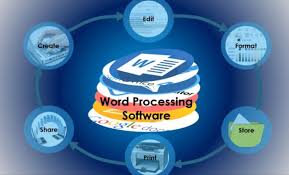When it comes to word processing, understanding the basics lays the foundation for efficient document editing. By exploring the benefits of document editing software and discovering the top features to look for, you can enhance your writing process significantly.
Whether you’re a seasoned professional or just starting, grasping the ins and outs of these tools can streamline your work and boost your productivity. So, let’s explore the world of document editing software together and unlock its full potential.
Understanding Word Processing Basics
To master word processing basics, familiarize yourself with common functions like text editing and formatting. Text editing involves actions such as inserting, deleting, and modifying text within a document. You can easily cut, copy, and paste text to rearrange your content efficiently. Additionally, mastering functions like undo and redo will help you correct mistakes quickly.
Formatting is another essential aspect of word processing. You can change the font style, size, and color to enhance the appearance of your document. Utilize features like bold, italics, and underline to emphasize specific words or phrases. Paragraph alignment options such as left, center, right, and justified can help you structure your text effectively.
Understanding how to insert images, tables, and bullet points can make your documents more visually appealing and organized. Learning how to save, print, and share your work will enable you to efficiently manage your documents. By familiarizing yourself with these basic functions, you’ll be well-equipped to navigate and utilize word processing software effectively.
Benefits of Document Editing Software
Switching gears to document editing software, you’ll discover a range of advantages that streamline your editing process and enhance your overall document quality. One major benefit is the ability to easily make changes to your document without having to retype the entire thing. This saves you time and effort, allowing for quick revisions and updates. Document editing software also offers features like spell check, grammar check, and formatting options, helping you ensure that your documents are error-free and professional-looking.
Another advantage is the collaborative aspect of document editing software. You can easily share your documents with others, allowing for real-time collaboration and feedback. This is especially useful for team projects or when working with clients. Additionally, document editing software often provides version control, so you can track changes made to the document and revert to previous versions if needed.
Top Features to Look For
When considering document editing software, focus on key features that can enhance your editing experience and boost productivity. Look for robust formatting options that allow you to customize fonts, styles, and layouts effortlessly.
A spell checker and grammar checker are essential tools to ensure your documents are error-free. Auto-save functionality can save you from losing work in case of unexpected disruptions.
Collaboration features, such as real-time editing and comments, enable seamless teamwork on documents. Version history is crucial for tracking changes and reverting to previous document states if needed.
Integration with cloud storage services like Google Drive or Dropbox provides easy access to your files from anywhere. A user-friendly interface with intuitive navigation simplifies the editing process.
Lastly, consider software that offers templates for various document types to kickstart your projects quickly. By prioritizing these features, you can find a document editing software that aligns with your needs and enhances your editing workflow.
Comparison of Popular Tools
Consider how the key features mentioned earlier translate into practical utility when comparing popular word processing tools.
Microsoft Word, a widely used tool, offers a user-friendly interface with a multitude of formatting options, making it ideal for creating professional documents.
Google Docs, on the other hand, excels in collaboration features, allowing multiple users to edit documents simultaneously.
If you prefer simplicity and portability, then Notion might be the right choice for you, as it combines word processing with task management and note-taking capabilities.
When comparing these tools, think about your specific needs. Are you looking for advanced formatting options and offline access? Microsoft Word could be your best bet.
Need real-time collaboration and cloud storage integration? Google Docs might suit you better.
If you value versatility and organization, Notion could be the perfect all-in-one solution for your document editing needs.
Ultimately, the best tool for you’ll depend on your workflow, preferences, and the type of documents you frequently work with.
Tips for Efficient Document Editing
For smoother and more effective document editing, prioritize organizing your thoughts before diving into revisions. Start by outlining the main points you want to convey in your document. This initial organization will help you stay focused and ensure that your message is clear and coherent.
As you begin editing, tackle one aspect at a time. Start with proofreading for spelling and grammar errors. Use the spell-check feature but also read through the document yourself to catch any mistakes that may be missed by the automated tool.
Next, focus on the overall structure of your document. Ensure that your ideas flow logically and that each paragraph transitions smoothly to the next.
Pay attention to formatting as well. Use headings, bullet points, and numbering to break up large chunks of text and make your document more visually appealing.
Lastly, don’t forget to save your work frequently to avoid losing any changes. Following these tips will help you edit your documents efficiently and produce polished final drafts.
Conclusion
Now that you understand the basics of word processing and the benefits of document editing software, you can choose the right tool for your needs.
Look for features like spell check, formatting options, and collaboration tools to make your editing process smoother.
Popular tools like Microsoft Word, Google Docs, and Adobe Acrobat offer a range of features to enhance your document editing experience.
Remember to use these tips for efficient editing and make your documents stand out. Happy editing!
